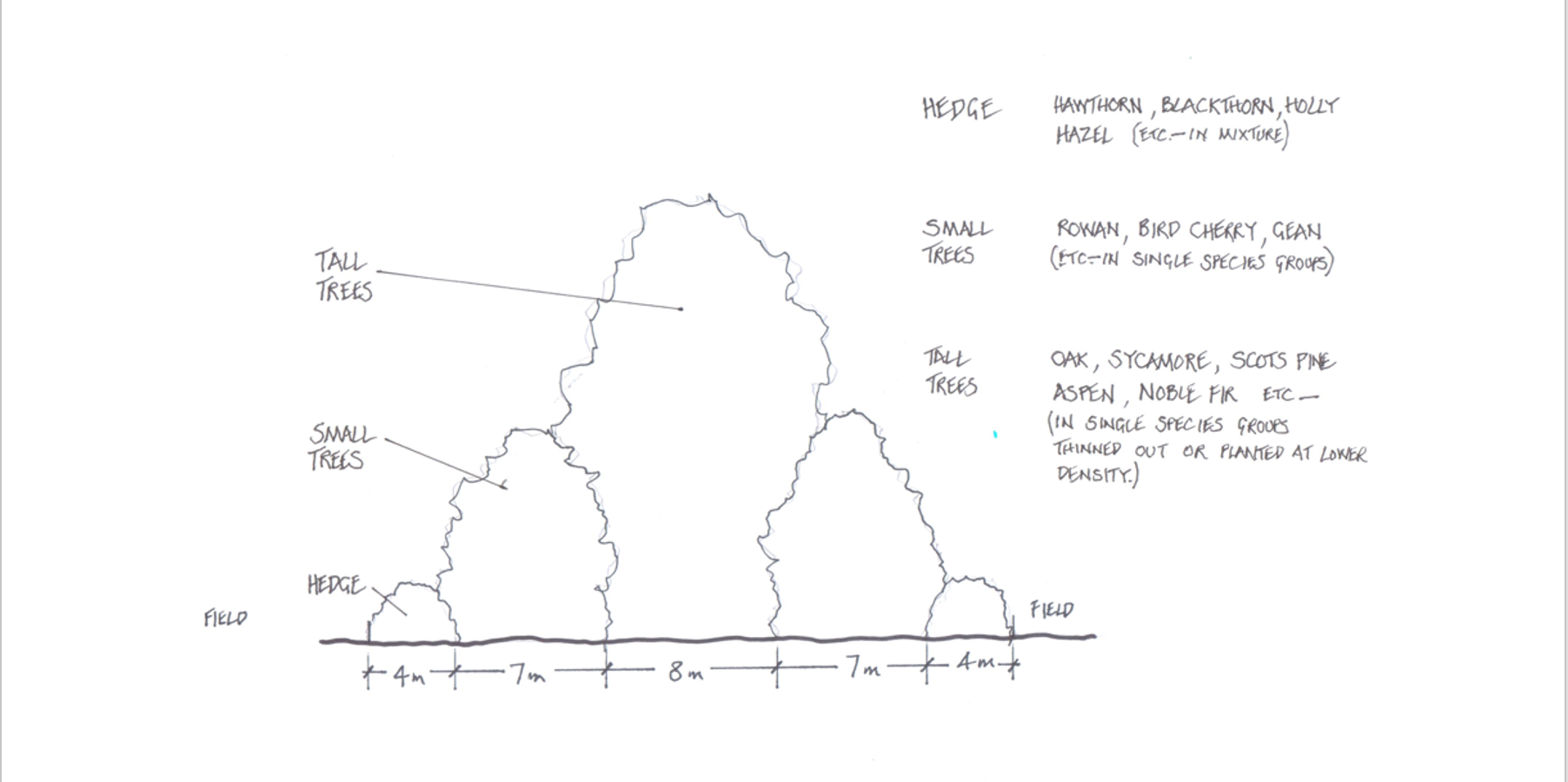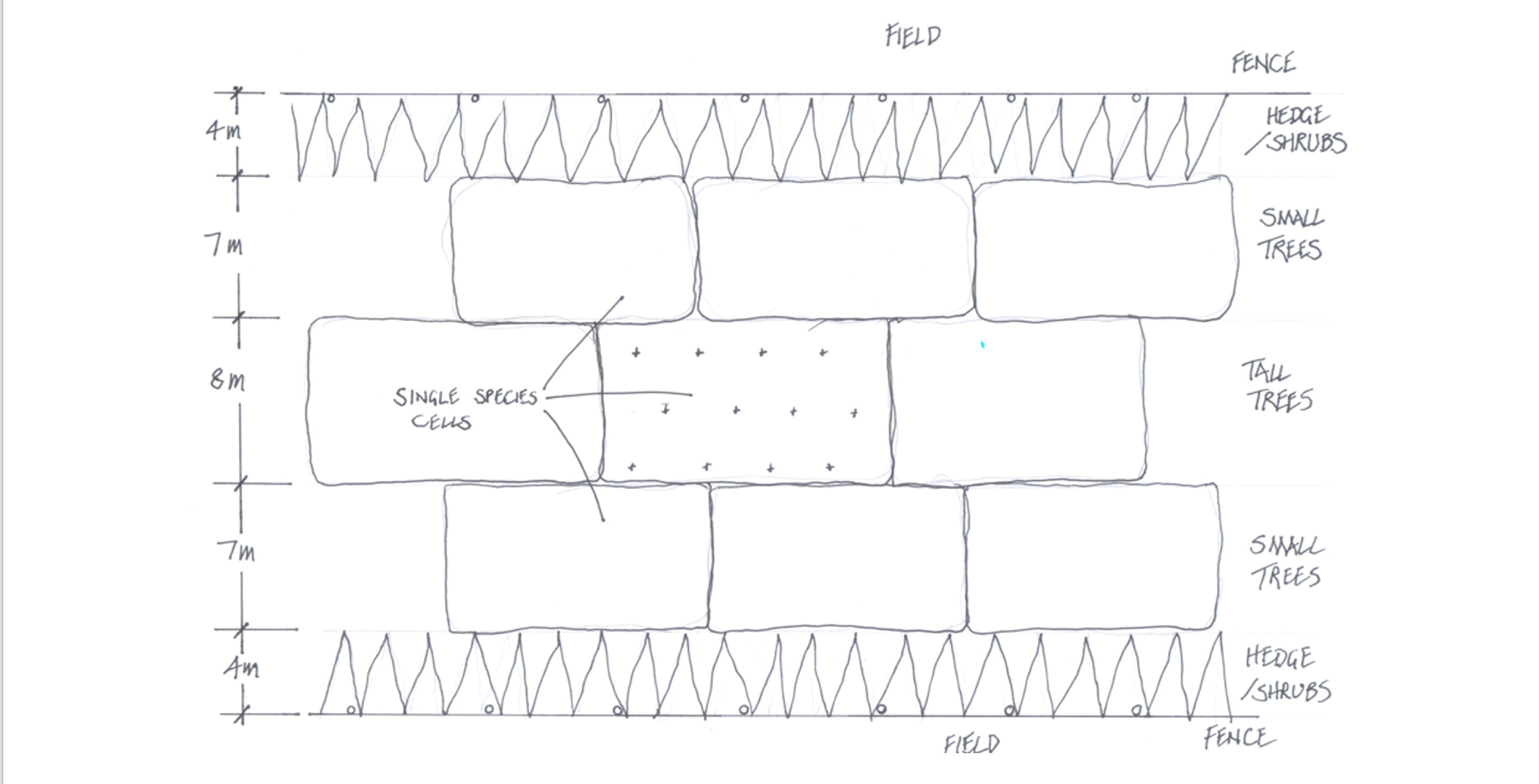Latest News
Shelterbelt Design - What have we learned?As Storm Arwen has recently reminded us, getting the design of shelterbelts right is critically important.
Status Update
Forest Direct have assessed storm damage at over 86 client properties, with damage ranging from a few edge and individual trees to swathes of windblown trees, in many cases rendering the shelterbelts or woodlands unviable, with the ultimate impact being the removal of whole woodlands.
The priority remains public safety and structural property damage. Leaning trees, particularly over public roads, is still an issue in some places due to the lack of qualified tree surgeons available to carry out the work.
The second priority for our clients is to clear windblown trees off fence lines and stone dykes. This is dangerous work with trees often leaning, resulting in considerable tension in the tree. Using excavators with shears is safer than chainsaw and winch in these situations.
The main bulk of the windblow should be left till the Spring/Summer when the ground is drier; there is more daylight, and demand from the timber market traditionally picks up over Easter. However, this will depend on-site access over fields, crops in fields and how soon the owner wants the windblow cleared.
Due to oversupply, timber prices are expected to fall, especially for pine sawlogs and chipwood. We will be monitoring timber prices and will recommend the best time to undertake the harvesting. We always sell the timber before harvesting work starts.
Before windblown trees can be cleared, felling permission is required. Due to the number of storm-related applications, Felling Licences are fast-tracked. However, it can require up to 4 to 6 weeks for approval.
We can help you
A felling permission application raises several important questions such as:
- Do we need to take down standing trees as well that could blow over?
- Has the woodland or shelterbelt integrity been compromised to the extent that it should be cleared entirely or taken back to a windfirm edge?
- What species of trees are going to be used for replanting?
Storm Arwen is an opportunity to reassess the role of woodlands on the farm or estate. For example, is the objective purely shelter or income from timber sales or cover for game?
Farm woodlands should be an integral part of the land and crop management on the farm. Which woodlands are the most important for the farm – is this due to shelter, income or game? For replanting, are there alternative species to better suit your objectives?
Are there additional areas that could be planted to improve the effectiveness of the woodland shape to perform its role, be that shelter, timber income, sporting, landscape enhancement? In certain circumstances, the woodland can be relocated entirely.
We have designs for replacement shelterbelts that can fit your requirements. We recognise that many farm woodlands are required for more than one objective and can design a forest that can satisfy all the objectives.
Shelterbelt Design Principals
• Shelterbelts should form a permeable (rather than solid) barrier to airflow.
• Shelterbelts should be thicker towards the outer edge. It is important to retain density towards ground level, and this may be maintained by coppicing some of the edge trees.
• Extent of shelter provided is up to 9x top height upwind and 30x top height downwind. Therefore, a core of stable tall trees is desirable to maximise shelter area.
• If wide enough, the central core of large trees can be grown for timber production.
• Avoid locating shelterbelts on wet depressions or frost hollows where a gap is likely to be created. Gaps result in wind acceleration!
• Species choice and layout must be varied to suit the site.
• Inner layer 7-10m wide of small species trees such as rowan, bird cherry etc., potentially suitable for coppicing in future. Species liable to suckering are also favoured.
• Create an inner core 8+m wide of stable long term taller trees such as sycamore, oak, aspen, Scots pine, Silver / Noble fir or spruce. This can either be achieved by initial planting at a lower density, such as 3m centres or by thinning at the appropriate stage to avoid drawn stems.
• Plant trees in single species cells or groups to facilitate future management on a group selection basis to maintain shelter long-term.
• There are opportunities for future timber harvesting for wider shelterbelts where the core area is expanded. If the cellular structure is maintained throughout the core, alternate cells can be harvested, with retained cells continuing to shelter.
• All shelterbelts should be thinned early to promote long term stability.
Mutch W. (2020) Tall Trees & Small Woods, pages 222 – 230.
For further information, please contact Jeremy on 07967 111805


